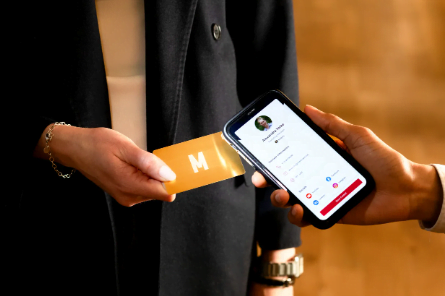Business Cards: The Evolution-Despite the proliferation of digital alternatives, business cards have maintained their relevance for several reasons. Firstly, they offer a personal touch that digital communications often lack. Handing someone your business card creates a tangible connection, a moment of direct interaction that can be more memorable than a quick exchange of email addresses or LinkedIn profiles.
Moreover, business cards are a physical reminder of your meeting. Long after the event or conference, when the recipient finds your card in their wallet or desk drawer, it can rekindle the memory of your interaction and prompt follow-up(Read more:‘Our technology allows us to access energy anywhere in the world’)
Designing the Perfect Business Card

The design of your business card is crucial as it represents you and your brand. A well-designed card can convey professionalism and attention to detail. Here are some tips to ensure your business card stands out:
- Simplicity is Key: A cluttered business card can be overwhelming. Keep your design clean and straightforward. Include only essential information like your name, title, company, phone number, email, and website.
- Quality Material: The quality of the paper or material used for your business card speaks volumes about your brand. A flimsy card can give a negative impression, while a thick, high-quality card can make a strong statement.
- Unique Elements: Incorporate unique elements such as embossing, foil stamping, or even QR codes. These can make your card memorable and provide additional ways for people to connect with you.
- Brand Consistency: Ensure that your business card aligns with your brand’s colors, fonts, and overall style. Consistency across all your marketing materials helps in building a recognizable brand.
Digital Integration
While traditional business cards remain important, integrating digital elements can enhance their functionality. QR codes are an excellent example. By scanning a QR code on your business card, recipients can be directed to your website, LinkedIn profile, or a digital portfolio, providing them with more information than what can be printed on a card(Read more:‘Solves one of the wind industry’s greatest challenges in the coming decades’)
Networking with Business Cards
Effective networking is an art, and business cards are one of its essential tools. Here are some tips for using your business cards effectively:
- Always Be Prepared: You never know when an opportunity might arise. Always carry a stack of business cards with you, whether you’re at a professional event, a social gathering, or even a casual meet-up.
- Presentation Matters: When handing over your business card, do so with both hands and a smile. This gesture can be seen as respectful and shows that you value the connection.
- Follow Up: After exchanging business cards, make sure to follow up with a personalized email or a LinkedIn connection request. Mention something specific from your conversation to jog the recipient’s memory.
Business Cards in a Global Context
In different cultures, business cards have varying levels of importance and different etiquettes associated with them. In Japan, for instance, the exchange of business cards (meishi) is a formal ritual. The card is presented and received with both hands, and it is considered rude to put it away immediately without examining it carefully. Understanding and respecting these cultural nuances can significantly impact your professional relationships.
The Environmental Impact
With growing awareness about environmental sustainability, many professionals are seeking eco-friendly alternatives for their business cards. Options include using recycled paper, opting for digital business cards, or even planting cards embedded with seeds that can be planted after use. These environmentally friendly options not only reduce waste but also send a positive message about your commitment to sustainability.
The Future of Business Cards
The future of business cards looks promising with advancements in technology. Augmented Reality (AR) business cards, for example, can display 3D models, videos, or interactive content when viewed through a smartphone camera. Such innovations can create engaging and memorable experiences, making your business card stand out even more.
In conclusion, business cards remain a powerful tool in professional networking. They bridge the gap between traditional and digital communication, offering a personal touch and a lasting impression. Whether you’re a seasoned professional or just starting in your career, having a well-designed business card can open doors to new opportunities and connections. So, don’t underestimate the power of this small but mighty tool in your networking arsenal.





[…] is heavily involved in developing new nuclear technologies, such as Small Modular Reactors (SMRs) and advanced fuel types that enhance reactor performance and […]